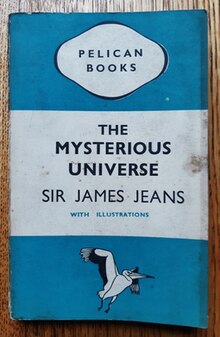
Sir Arthur Stanley Eddington, was an English astronomer, physicist, and mathematician. He was also a philosopher of science and a populariser of science. The Eddington limit, the natural limit to the luminosity of stars, or the radiation generated by accretion onto a compact object, is named in his honour.

The Big Bang is a physical theory that describes how the universe expanded from an initial state of high density and temperature. The notion of an expanding universe was first scientifically originated by physicist Alexander Friedmann in 1922 with the mathematical derivation of the Friedmann equations. The earliest empirical observation of the notion of an expanding universe is known as Hubble's law, published in work by physicist Edwin Hubble in 1929, which discerned that galaxies are moving away from Earth at a rate that accelerates proportionally with distance. Independent of Friedmann's work, and independent of Hubble's observations, physicist Georges Lemaître proposed that the universe emerged from a "primeval atom" in 1931, introducing the modern notion of the Big Bang.

General relativity, also known as the general theory of relativity, and as Einstein's theory of gravity, is the geometric theory of gravitation published by Albert Einstein in 1915 and is the current description of gravitation in modern physics. General relativity generalizes special relativity and refines Newton's law of universal gravitation, providing a unified description of gravity as a geometric property of space and time, or four-dimensional spacetime. In particular, the curvature of spacetime is directly related to the energy and momentum of whatever present matter and radiation. The relation is specified by the Einstein field equations, a system of second-order partial differential equations.

Paul Adrien Maurice Dirac was an English mathematical and theoretical physicist who is considered to be one of the founders of quantum mechanics. Dirac laid the foundations for both quantum electrodynamics and quantum field theory. He was the Lucasian Professor of Mathematics at the University of Cambridge, a professor of physics at Florida State University and a 1933 Nobel Prize in Physics recipient.

Quantum mechanics is a fundamental theory that describes the behavior of nature at and below the scale of atoms. It is the foundation of all quantum physics, which includes quantum chemistry, quantum field theory, quantum technology, and quantum information science.
A timeline of atomic and subatomic physics, including particle physics.

A Brief History of Time: From the Big Bang to Black Holes is a book on theoretical cosmology by the physicist Stephen Hawking. It was first published in 1988. Hawking wrote the book for readers who had no prior knowledge of physics.

Steven Weinberg was an American theoretical physicist and Nobel laureate in physics for his contributions with Abdus Salam and Sheldon Glashow to the unification of the weak force and electromagnetic interaction between elementary particles.

Edward Arthur Milne FRS was a British astrophysicist and mathematician.

Sir Joseph Larmor was an Irish physicist and mathematician who made breakthroughs in the understanding of electricity, dynamics, thermodynamics, and the electron theory of matter. His most influential work was Aether and Matter, a theoretical physics book published in 1900.
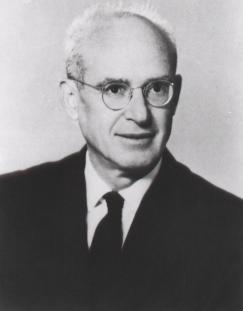
Nathan Rosen was an American and Israeli physicist noted for his study on the structure of the hydrogen molecule and his collaboration with Albert Einstein and Boris Podolsky on entangled wave functions and the EPR paradox. He is also remembered for the Einstein–Rosen bridge, the first known kind of wormhole.

Sir James Hopwood Jeans was an English physicist, mathematician and an astronomer. He served as a secretary of the Royal Society from 1919 to 1929, and was the president of the Royal Astronomical Society from 1925 to 1927, and won its Gold Medal.
In physics, a unified field theory (UFT) is a type of field theory that allows all fundamental forces and elementary particles to be written in terms of a single type of field. According to modern discoveries in physics, forces are not transmitted directly between interacting objects but instead are described and interpreted by intermediary entities called fields. Furthermore, according to quantum field theory, particles are themselves the quanta of fields. Examples of different fields in physics include vector fields such as the electromagnetic field, spinor fields whose quanta are fermionic particles such as electrons, and tensor fields such as the metric tensor field that describes the shape of spacetime and gives rise to gravitation in general relativity. Unified field theory attempts to organize these fields into a single mathematical structure.
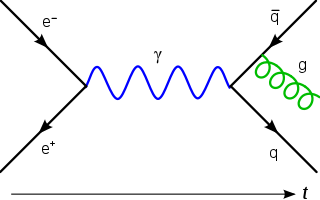
In particle physics, the history of quantum field theory starts with its creation by Paul Dirac, when he attempted to quantize the electromagnetic field in the late 1920s. Major advances in the theory were made in the 1940s and 1950s, leading to the introduction of renormalized quantum electrodynamics (QED). The field theory behind QED was so accurate and successful in predictions that efforts were made to apply the same basic concepts for the other forces of nature. Beginning in 1954, the parallel was found by way of gauge theory, leading by the late 1970s, to quantum field models of strong nuclear force and weak nuclear force, united in the modern Standard Model of particle physics.
Quantum mechanics is the study of matter and its interactions with energy on the scale of atomic and subatomic particles. By contrast, classical physics explains matter and energy only on a scale familiar to human experience, including the behavior of astronomical bodies such as the moon. Classical physics is still used in much of modern science and technology. However, towards the end of the 19th century, scientists discovered phenomena in both the large (macro) and the small (micro) worlds that classical physics could not explain. The desire to resolve inconsistencies between observed phenomena and classical theory led to a revolution in physics, a shift in the original scientific paradigm: the development of quantum mechanics.
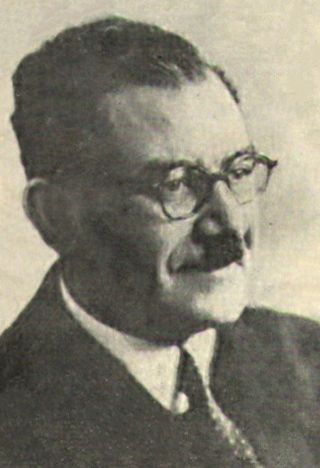
Ali Moustafa Attia Mosharrafa was an Egyptian theoretical physicist. He was a Professor of Applied Mathematics at Cairo University and also served as the University's first dean. He contributed to the development of Quantum theory as well as the Theory of relativity.
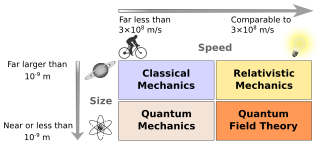
Physics is a scientific discipline that seeks to construct and experimentally test theories of the physical universe. These theories vary in their scope and can be organized into several distinct branches, which are outlined in this article.
The Universe Around Us is a science book written by English astrophysicist Sir James Jeans, first published in 1929 by the Syndics of the Cambridge University Press.

A History of the Theories of Aether and Electricity is any of three books written by British mathematician Sir Edmund Taylor Whittaker FRS FRSE on the history of electromagnetic theory, covering the development of classical electromagnetism, optics, and aether theories. The book's first edition, subtitled from the Age of Descartes to the Close of the Nineteenth Century, was published in 1910 by Longmans, Green. The book covers the history of aether theories and the development of electromagnetic theory up to the 20th century. A second, extended and revised, edition consisting of two volumes was released in the early 1950s by Thomas Nelson, expanding the book's scope to include the first quarter of the 20th century. The first volume, subtitled The Classical Theories, was published in 1951 and served as a revised and updated edition to the first book. The second volume, subtitled The Modern Theories (1900–1926), was published two years later in 1953, extended this work covering the years 1900 to 1926. Notwithstanding a notorious controversy on Whittaker's views on the history of special relativity, covered in volume two of the second edition, the books are considered authoritative references on the history of electricity and magnetism as well as classics in the history of physics.

Sir Edmund Taylor Whittaker was a British mathematician, physicist, historian of science, and philosopher who authored three titles that remain in circulation over a century after their initial publications. His bibliography includes several books and over one hundred published papers on a variety of subjects, including mathematics, astronomy, mathematical physics, theoretical physics, philosophy, and theism. Whittaker's bibliography in the Biographical Memoirs of Fellows of the Royal Society categorises his publications into three categories: books and monographs, maths and physics articles, and biographical articles; the bibliography excludes works published in popular magazines like Scientific American. The bibliography includes eleven total books and monographs, fifty-six maths and physics articles, thirty-five philosophy and history articles, and twenty-one biographical articles. In the bibliography compiled by William Hunter McCrea in 1957, there are thirteen books and monographs and the same journal articles; McCrea counts all three volumes of A History of the Theories of Aether and Electricity as separate books and excludes the same papers. Whittaker's contributions to Scientific American include two book reviews and a popular article on mathematics.
